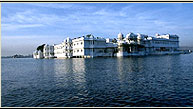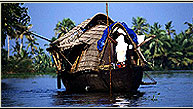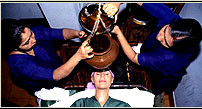Buddhist Sites
-| Kurkihar | -
Location: District Gaya (Bihar) - Lat 24º 49' N, Long 85º 15'
E
Kurkihar is a village 4 kms. to the northeast of the Wazirganj railway station
(On Gaya Kiul railway line) and 25 kms. from Gaya. The Buddhist sculptures collected
from this site in the middle of the 19th Century by Britishers have been housed
in the Indian Museum, Calcutta. They belong to the Tantric Buddhist phase.
A inscription is written on an architrave that records the construction of a
“gandha kuti”(temple) of Sugata (Lord Buddha) by an inhabitant of
Kerala in Dakshindesa (South India). The temple is represented by a mound locally
known as Sugatghar. The present name of the village is survived by the name
of the ancient Kikkutapada Girivihar named after Kukkutapada Giri, a hill of
high sanctity mentioned both by Fa-hien and Hiuen -Tsang - Chinese travellars
of 4th and 7th century AD. It was probably the triple peaked hill, that the
venerable Mahakasyapa - one of the chief disciples of Lord Buddha, is believed
to have repaired to await the coming of Maitrya, the future Buddha, to whom
he is to hand over the charge of the Dharma and also the monks robe of Lord
Buddha. The above fact is gathered by the account of Hiuen -Tsang. In his writings,
this site has been identified.
During early part of 20th century, in the course of digging for building material,
one of the richest hoards of bronze objects within a partly exposed room inside
the largest mound was discovered. The site proved to have been a prolific centre
of metal casting with Buddhist affiliations. More than two hundred pieces of
this hoard were digged out that included one hundred and forty eight Buddhist
and eight Brahiamical images of fine workmanship. Apart from these pieces, parts
of images, stupa, bells were also found. Among the Buddhist images are a few
of the Vjarayana pantheon and a fairly large number of crowned Buddha. The height
of the largest pieces is 5 feet that include stand of images of Lord Buddha
with pedestal. Some of the bronze idols show remarkable technical qualities
on stylistic grounds and could be dated to Pre-Pala period. The images bear
close affinity to the bronze images of Nalanda (Bihar).
The magnificence of this establishment in its flourishing days can easily be
visualized not only from the extensive area and remarkable antiquities that
include votive stupas, sculptures but also from the architectural pieces with
inscriptions recording the pious donation of a large number of devotees hailing
from distant lands like Saikala (Sialkot-in the Punjab ), Kanchi (Kanchipuram
in South India), Pandya (eastern South India ) and the island of Bali (Indonesia).
Kurkihar - Buddhist, Archaeology
in India
Reservation Form
 Special
Indian Tour packages Special
Indian Tour packages |



